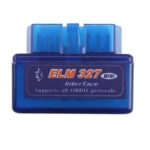Obd2 Codes are the key to understanding what’s wrong with your vehicle. This guide provides a comprehensive overview of these diagnostic trouble codes, helping you decipher their meaning and take the next steps towards resolving car issues.
Decoding Diagnostic Trouble Codes (DTCs)
OBD2, or On-Board Diagnostics II, is a standardized system that allows you to access your vehicle’s self-diagnostic data. When a problem arises, the system generates a specific OBD2 code, a five-digit alphanumeric sequence that pinpoints the issue. Understanding these codes can empower you to address potential problems proactively.
Generic OBD2 Codes: P0, P2, and P3 Series
The most frequently encountered OBD2 codes fall under the P0xxx series, relating to powertrain issues. This category encompasses problems with the engine, transmission, and emissions systems. Following closely are the P2xxx and P3xxx series, which represent generic diagnostic trouble codes applicable across various vehicle makes and models. These codes cover a broader range of systems, offering a standardized approach to diagnostics.
For instance, a common code like P0420 signifies a problem with the catalytic converter system efficiency below threshold. This indicates that the catalytic converter isn’t functioning optimally, impacting emissions and potentially performance. Another prevalent code, P0171, points to a lean air/fuel mixture in system 1. This suggests an imbalance in the air-fuel ratio, often caused by a vacuum leak, faulty sensor, or fuel delivery problem.
Manufacturer-Specific OBD2 Codes: P1 Series
While generic codes offer a broad diagnostic foundation, P1xxx codes delve into manufacturer-specific issues. These codes are unique to each car maker, addressing specific components and systems within their vehicle models. Accessing information on P1xxx codes often requires consulting the manufacturer’s documentation or utilizing specialized diagnostic tools.
Navigating OBD2 Code Resources
Due to the extensive number of OBD2 codes, navigating this information can feel overwhelming. Online resources, such as OBD-Codes.com, provide comprehensive databases and search functionalities to simplify the process. Using the search feature on these websites is highly recommended for quick and efficient code lookup. Simply entering the specific five-digit code will yield detailed information about its meaning, potential causes, and common troubleshooting steps.
Utilizing OBD2 Codes for Vehicle Repair
While OBD2 codes provide invaluable diagnostic insights, it’s crucial to remember they are a starting point, not a definitive solution. Confirming the applicability of the code to your specific vehicle and performing thorough diagnostics are essential. Using an OBD2 scanner empowers you to read these codes yourself, providing a better understanding of your vehicle’s health and facilitating informed decisions regarding repairs. However, consulting with a qualified mechanic is always recommended for complex issues or when specialized knowledge is required.
Conclusion
Understanding OBD2 codes is crucial for any car owner. These codes provide a window into your vehicle’s inner workings, enabling early problem detection and informed repair decisions. Utilizing online resources and seeking professional guidance when needed will help you leverage the power of OBD2 codes for maintaining your vehicle’s optimal performance and longevity. Remember, accurate diagnosis is the first step towards effective repair.


